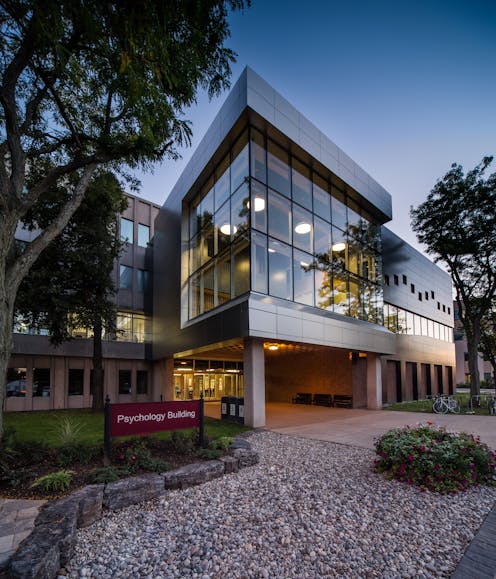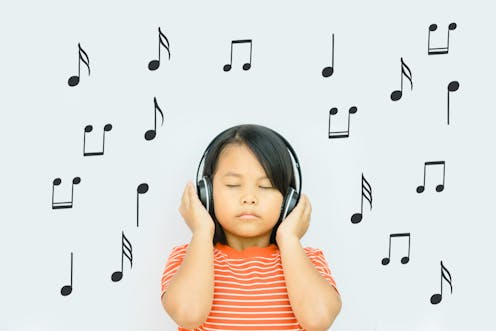Introduction
Virtual dance therapy is an emerging field that has the potential to revolutionize mental health treatment. This innovative approach combines the therapeutic benefits of dance with the immersive experience of virtual reality technology. By incorporating movement, music, and biofeedback, virtual dance therapy offers a unique and effective way to address mental health challenges such as depression, anxiety, and PTSD. In this article, we will explore the science behind dance therapy, the advantages of virtual reality technology, the role of movement and music in regulating emotions, the connection between body movement and brain function, the use of biofeedback, and the potential impact of virtual dance therapy on mental health care.
Understanding the Science of Dance Therapy and its Benefits for Mental Health
Dance therapy is a form of expressive therapy that uses movement to promote emotional, cognitive, and physical well-being. It is based on the belief that the mind and body are interconnected, and that movement can be a powerful tool for self-expression and healing. Dance therapy has been shown to have numerous benefits for mental health, including reducing stress, improving self-esteem, enhancing body image, and increasing overall well-being.
The science behind dance therapy lies in its ability to activate various regions of the brain. When we engage in physical movement, our brain releases endorphins, which are natural mood enhancers. This can help to reduce symptoms of depression and anxiety. Additionally, dance therapy has been found to increase levels of dopamine and serotonin, neurotransmitters that are associated with feelings of pleasure and happiness. By stimulating these brain chemicals, dance therapy can improve mood and overall mental health.
How Virtual Reality Technology is Revolutionizing Dance Therapy
Virtual reality technology is revolutionizing the field of dance therapy by providing an immersive and interactive experience for participants. Virtual reality (VR) refers to a computer-generated environment that can simulate real or imagined experiences. In the context of dance therapy, VR technology allows individuals to engage in a virtual dance experience, where they can explore different movements, environments, and scenarios.
The advantages of virtual reality technology in dance therapy are numerous. Firstly, it provides a safe and controlled environment for individuals to explore and express themselves. This can be particularly beneficial for those who may feel self-conscious or uncomfortable in traditional therapy settings. Secondly, VR technology allows for a more personalized and tailored experience. Therapists can customize the virtual environment and movements to meet the specific needs and goals of each individual. Finally, virtual reality technology can enhance the therapeutic experience by providing real-time feedback and data. This can help individuals track their progress and make adjustments as needed.
The Role of Movement and Dance in Regulating Emotions and Reducing Stress
Movement and dance have long been recognized as powerful tools for regulating emotions and reducing stress. When we engage in physical activity, our body releases endorphins, which are natural mood enhancers. This can help to reduce symptoms of stress and anxiety. Additionally, movement and dance can help to release tension and promote relaxation. By focusing on the body and the present moment, individuals can experience a sense of calm and well-being.
Incorporating movement and dance into mental health treatment can have numerous benefits. Firstly, it provides a non-verbal form of expression. For individuals who may struggle to articulate their emotions or thoughts, movement and dance can offer a way to communicate and process their experiences. Secondly, movement and dance can help to increase body awareness and improve body image. By engaging in physical activity, individuals can develop a greater sense of connection and acceptance of their bodies. Finally, movement and dance can promote a sense of empowerment and agency. By actively participating in their own healing process, individuals can gain a sense of control and mastery over their mental health challenges.
The Power of Music in Virtual Dance Therapy for Mental Health
Music plays a crucial role in virtual dance therapy for mental health. It has the power to evoke emotions, create a sense of connection, and enhance the therapeutic experience. In virtual dance therapy, music is carefully selected to match the movements and emotions of the individual. This creates a harmonious and immersive experience that can deepen the therapeutic process.
Music has been shown to have numerous benefits for mental health. It can help to reduce symptoms of anxiety and depression, improve mood, and promote relaxation. Additionally, music can enhance cognitive function, increase motivation, and improve overall well-being. In the context of virtual dance therapy, music serves as a catalyst for movement and self-expression. It can help individuals tap into their emotions, release tension, and connect with their bodies. By incorporating music into the virtual dance experience, therapists can create a multi-sensory and transformative healing environment.
Exploring the Connection Between Body Movement and Brain Function
The connection between body movement and brain function is a fascinating area of research that has important implications for virtual dance therapy. When we engage in physical movement, our brain undergoes a series of changes that can impact our mental health and well-being. For example, movement has been shown to increase blood flow to the brain, which can enhance cognitive function and improve mood. Additionally, movement activates the brain’s reward system, releasing neurotransmitters such as dopamine and serotonin that are associated with feelings of pleasure and happiness.
In virtual dance therapy, the connection between body movement and brain function is utilized to promote healing and well-being. By engaging in specific movements and sequences, individuals can stimulate different regions of the brain and create new neural pathways. This can help to rewire the brain and promote positive changes in mood, cognition, and behavior. Additionally, the rhythmic and repetitive nature of dance can have a calming effect on the brain, reducing symptoms of stress and anxiety. By understanding and harnessing the connection between body movement and brain function, virtual dance therapy offers a unique and effective approach to mental health treatment.
The Use of Biofeedback in Virtual Dance Therapy for Mental Health
Biofeedback is a technique that allows individuals to monitor and control their physiological responses using electronic devices. In the context of virtual dance therapy, biofeedback can be used to enhance the therapeutic experience and promote self-regulation. By providing real-time feedback on heart rate, breathing, and other physiological markers, individuals can learn to recognize and manage their stress responses.
The benefits of biofeedback in mental health treatment are numerous. Firstly, it can help individuals become more aware of their body’s responses to stress and anxiety. By monitoring their physiological markers, individuals can gain insight into how their body reacts to different situations and learn to recognize early warning signs of stress. Secondly, biofeedback can help individuals develop self-regulation skills. By learning to control their physiological responses, individuals can reduce symptoms of stress and anxiety and promote a sense of calm and well-being. Finally, biofeedback can enhance the therapeutic process by providing objective data and feedback. This can help individuals track their progress and make adjustments as needed.
Virtual Dance Therapy for Specific Mental Health Conditions: Depression, Anxiety, PTSD, and More
Virtual dance therapy has shown promise in the treatment of various mental health conditions, including depression, anxiety, PTSD, and more. For individuals with depression, virtual dance therapy can help to increase energy levels, improve mood, and promote a sense of connection and joy. By engaging in physical movement and music, individuals can release endorphins and stimulate the brain’s reward system, leading to a reduction in depressive symptoms.
For individuals with anxiety, virtual dance therapy can provide a safe and controlled environment to explore and manage their symptoms. By engaging in movement and music, individuals can release tension, regulate their breathing, and promote relaxation. Additionally, the immersive and interactive nature of virtual reality technology can help individuals confront and overcome their fears and phobias in a gradual and supportive way.
For individuals with PTSD, virtual dance therapy can offer a unique and effective approach to trauma processing and healing. By engaging in movement and music, individuals can tap into their emotions, release tension, and promote a sense of empowerment and agency. Additionally, the immersive and controlled environment of virtual reality technology can help individuals reframe and reprocess traumatic memories in a safe and supportive way.
The Future of Virtual Dance Therapy and its Potential Impact on Mental Health Care
The future of virtual dance therapy holds great promise for the field of mental health care. As technology continues to advance, virtual reality experiences will become more immersive, interactive, and personalized. This will allow for even greater customization and tailoring of virtual dance therapy experiences to meet the specific needs and goals of each individual.
Additionally, virtual dance therapy has the potential to reach a wider audience and overcome barriers to access. Virtual reality technology can be used remotely, allowing individuals to engage in therapy from the comfort of their own homes. This can be particularly beneficial for individuals who may have limited mobility, live in remote areas, or have difficulty accessing traditional therapy settings.
Furthermore, virtual dance therapy has the potential to be integrated into existing mental health treatment approaches. It can be used as a complementary therapy alongside traditional talk therapy, medication, and other interventions. By combining different modalities, therapists can provide a holistic and comprehensive approach to mental health care.
Conclusion: Virtual Dance Therapy as a Promising Treatment Option for Mental Health Challenges
In conclusion, virtual dance therapy offers a promising and innovative approach to mental health treatment. By combining the therapeutic benefits of dance with the immersive experience of virtual reality technology, virtual dance therapy provides a unique and effective way to address mental health challenges such as depression, anxiety, and PTSD. The science behind dance therapy, the advantages of virtual reality technology, the role of movement and music in regulating emotions, the connection between body movement and brain function, and the use of biofeedback all contribute to the effectiveness of virtual dance therapy. With its potential to reach a wider audience and overcome barriers to access, virtual dance therapy has the potential to revolutionize mental health care and improve the lives of individuals struggling with mental health challenges.
Find out how Torongo Therapyplus can help you with your needs. Get in touch with us at smile@torongo.life, or call us on 02 8809 9965.






























